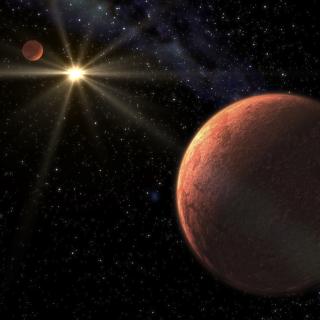Bibcode
Soto, M. G.; Anglada-Escudé, G.; Dreizler, S.; Molaverdikhani, K.; Kemmer, J.; Rodríguez-López, C.; Lillo-Box, J.; Pallé, E.; Espinoza, N.; Caballero, J. A.; Quirrenbach, A.; Ribas, I.; Reiners, A.; Narita, N.; Hirano, T.; Amado, P. J.; Béjar, V. J. S.; Bluhm, P.; Burke, C. J.; Caldwell, D. A.; Charbonneau, D.; Cloutier, R.; Collins, K. A.; Cortés-Contreras, M.; Girardin, E.; Guerra, P.; Harakawa, H.; Hatzes, A. P.; Irwin, J.; Jenkins, J. M.; Jensen, E.; Kawauchi, K.; Kotani, T.; Kudo, T.; Kunimoto, M.; Kuzuhara, M.; Latham, D. W.; Montes, D.; Morales, J. C.; Mori, M.; Nelson, R. P.; Omiya, M.; Pedraz, S.; Passegger, V. M.; Rackham, B. V.; Rudat, A.; Schlieder, J. E.; Schöfer, P.; Schweitzer, A.; Selezneva, A.; Stockdale, C.; Tamura, M.; Trifonov, T.; Vanderspek, R.; Watanabe, D.
Referencia bibliográfica
Astronomy and Astrophysics
Fecha de publicación:
5
2021
Revista
Número de citas
30
Número de citas referidas
28
Descripción
One of the main objectives of the Transiting Exoplanet Survey Satellite (TESS) mission is the discovery of small rocky planets around relatively bright nearby stars. Here, we report the discovery and characterization of the transiting super-Earth planet orbiting LHS 1478 (TOI-1640). The star is an inactive red dwarf (J ~ 9.6 mag and spectral type m3 V) with mass and radius estimates of 0.20 ± 0.01M⊙ and 0.25 ± 0.01R⊙, respectively, and an effective temperature of 3381 ± 54 K. It was observed by TESS in four sectors. These data revealed a transit-like feature with a period of 1.949 days. We combined the TESS data with three ground-based transit measurements, 57 radial velocity (RV) measurements from CARMENES, and 13 RV measurements from IRD, determining that the signal is produced by a planet with a mass of 2.33‒0.20+0.20 M⊕ and a radius of 1.24‒0.05+0.05 R⊕. The resulting bulk density of this planet is 6.67 g cm‒3, which is consistent with a rocky planet with an Fe- and MgSiO3-dominated composition. Although the planet would be too hot to sustain liquid water on its surface (its equilibrium temperature is about ~595 K, suggesting aVenus-like atmosphere), spectroscopic metrics based on the capabilities of the forthcoming James Webb Space Telescope and the fact that the host star is rather inactive indicate that this is one of the most favorable known rocky exoplanets for atmospheric characterization.
Proyectos relacionados

Estrellas de Baja Masa, Enanas Marrones y Planetas
Se investigan los procesos que conducen a la formación de estrellas de baja masa, enanas marrones y exoplanetas y caracterizar las propiedades físicas de estos astros en varias etapas evolutivas. Las estrellas de muy baja masa y las enanas marrones son probablemente los objetos más numerosos de nuestra Galaxia, pero no por ello están
Rafael
Rebolo López

Exoplanetas y Astrobiología
La búsqueda de vida en el Universo se ha visto impulsada por los recientes descubrimientos de planetas alrededor de otras estrellas (los llamados exoplanetas), convirtiéndose en uno de los campos más activos dentro de la Astrofísica moderna. En los últimos años los descubrimientos cada vez más numerosos de nuevos exoplanetas y los últimos avances
Enric
Pallé Bago